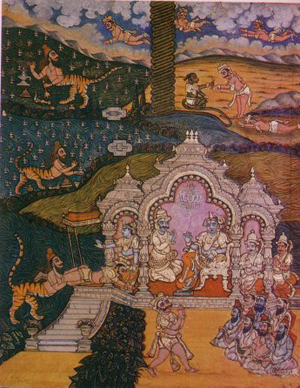
|
|
|
 |
 |
|---|
Introduction to Mahabharata
"What is found herein may also be found in other sources,
What is not found herein is nowhere else." Mahabharata
The Mahabharata can be translated as "The Great Tale of the Bharata Dynasty," or "The Great Tale of the Land of Bharata." (India was previously known as Bharata). The Mahabharata divided into 18 books, comprising more than 90,000 couplets, is the longest single poem in world literature.
The poem, set on the plain of the Upper Ganges, deals with the fortunes of the warring families of the Kauravas and the Pandavas each descended from King Bharata, and reveals the ethical values of ancient Indian society and individual responsibility.
The Mahabharata is said to have been written by Sage Vyasa sometime between 400 B.C. and 200 A.D. The Mahabharata transcends culture and religion, and relays a simple theme that all of mankind can relate too. It is a story of good versus evil, of families in turmoil, of jealousy and betrayal, and search for the ultimate truth. The Mahabharata contains virtually all the lore and legend of the Hindu tradition.
 |
|---|